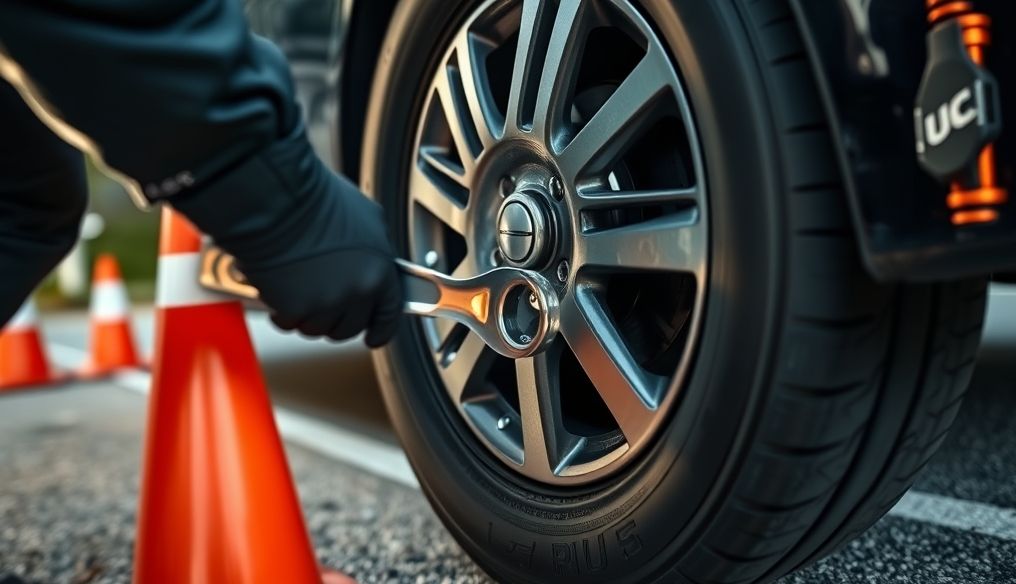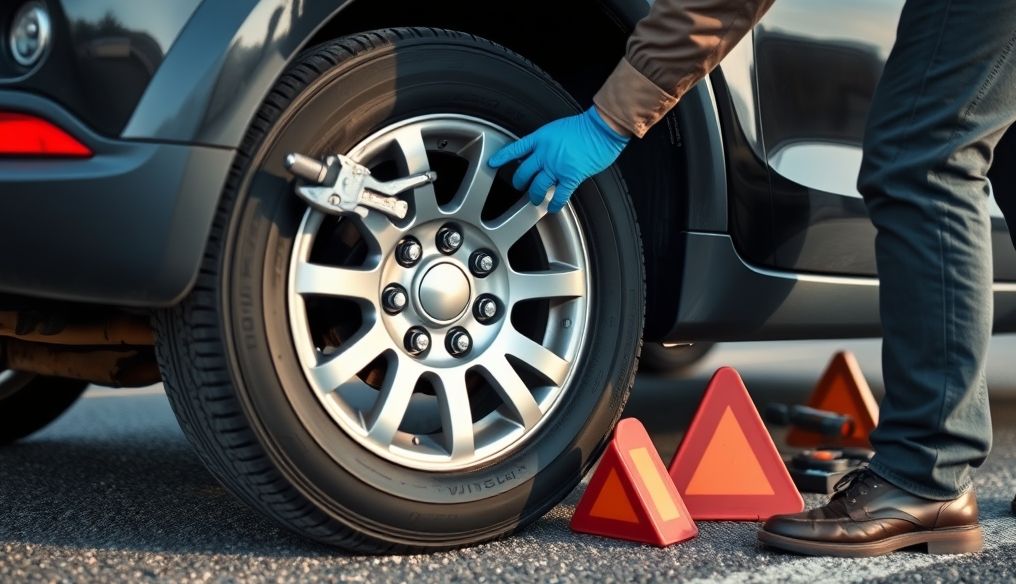Introduction: Why Should You Know How to Change a Tire?
Imagine you're driving on a highway and suddenly hear a loud noise and notice that your tire has a flat. In this moment, knowing how to change the tire yourself can be the difference between a long wait for help or getting back on the road quickly and safely. It's a fundamental skill that provides independence and avoids embarrassing or dangerous situations.
Tools Needed to Change a Tire
Before starting, make sure you have the following tools in your car:
- A sound spare tire: Make sure it's properly inflated.
- Jack: Used to lift the car.
- Lug wrench: To loosen and tighten the wheel nuts.
- Wooden block or stone: To secure the other wheels.
- Gloves: To protect your hands.
- Reflective warning triangles or warning light: To alert traffic.
- Owner's manual: Contains specific information about your car.
Tip: Regularly check the condition of the spare tire and make sure the tools are present and in good condition.
Step-by-Step Guide to Changing a Tire
1. Safety First
Before starting anything, make sure you are in a safe place away from traffic. Turn on the hazard lights (flashers) and place reflective warning triangles at an appropriate distance behind the car to alert other drivers. Wear a reflective vest if available.
2. Securing the Vehicle
Place a wooden block or stone in front of or behind the wheel opposite the one you will change to secure the car and prevent it from moving. Make sure the car is parked on a level surface.
3. Loosening the Lug Nuts
Using the lug wrench, loosen the lug nuts on the flat tire. Do not completely remove them, just loosen them slightly (about a quarter or half turn). It's easier to loosen the nuts before lifting the car.
Tip: If the nuts are stuck, you can use your body weight to press on the wrench or use a piece of pipe to increase leverage.
4. Lifting the Vehicle
Consult the owner's manual to identify the correct jacking points on your car. Place the jack in the designated spot and slowly lift the car until the flat tire is raised off the ground enough to remove the tire and install the spare.
Warning: Do not place any part of your body under the car while it is lifted by the jack. The jack is not designed to support the weight of the car alone.
5. Removing the Flat Tire
After lifting the car, completely loosen the lug nuts and remove the flat tire. Place the flat tire under the car as an extra precaution in case the jack slips.
6. Installing the Spare Tire
Lift the spare tire and place it in position on the wheel hub. Align the lug nut holes and hand-tighten the nuts.
7. Lowering the Vehicle
Slowly lower the car using the jack until the tire touches the ground. Remove the flat tire from under the car.
8. Tightening the Lug Nuts
Using the lug wrench, tighten the lug nuts securely in a crisscross pattern (star pattern) to ensure even pressure distribution. Do not overtighten.
9. Full Lowering and Final Tightening
Lower the car completely and remove the jack. Tighten the lug nuts again securely.
10. Final Check
Make sure all tools have been collected and that the flat tire and spare tire are securely stowed. Check the pressure of the spare tire at the nearest gas station. Remember that the spare tire is often designed for temporary use and should be replaced as soon as possible.
Additional Safety Tips
- Wear appropriate clothing: Avoid loose clothing that may get caught in the tools.
- Use gloves: To protect your hands from dirt and cuts.
- Check tire pressure regularly: Helps maintain driving safety and prolong tire life.
- Learn how to use the jack: Before needing it in an emergency.
- Do not drive at high speeds with the spare tire: There are often speed restrictions.
When Should You Call for Help?
If you are not sure you can change the tire safely, or if you are in an unsafe location, it is best to call for help from roadside assistance or contact the police. Safety is always the first priority.
Conclusion
Changing a flat tire yourself is a valuable skill that can save you in emergency situations. By following these steps and tips, you can do it safely and confidently. Always remember that safety is the top priority.




